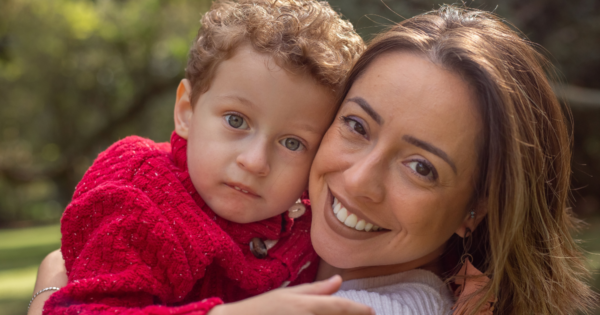
The words treatment and autism do not pair well. Common knowledge for some time has depicted autism as a condition that cannot be treated. Professionals have concluded there is little hope for someone with autism, leaving children and parents alike with little hope. Basic treatments, mostly based on behavior modification, have provided limited success. With such a prognosis, it is not surprising parents learning their child has autism have entered into despair. However, there are autism treatments that help improve the lives of those on the spectrum. To get there, you must do some digging and avoid mainstream behavior modification treatments like Applied Behavioral Analysis (ABA).
I have decided to begin to write a series of articles about the treatment of autism from my perspective. I am a therapist in the Houston area and have worked with autism, mainly Aspergers, for about 14 years. My experience with autism goes back three decades, as my best friend has Aspergers, and he has taught me much over the years about himself and his condition. As a therapist, my job is to keep up to date with treatments and to keep learning. I have found treatments for autism I consider groundbreaking. I will state now that most of the treatments I discuss I did not create. In discussing my treatment techniques, I will cite where I found them so that you can gain an overall perspective. In my opinion, the first step in treating autism is to change your mindset about autism.
What is Autism?
Autism, from my perspective, is a genetic condition influenced by environmental factors, causing social relationship problems and sensory over-stimulation. If this sounds technical, it is, but I will break it down. Autism is a developmental condition present at birth. No choice is involved, as one cannot pick their genes or parents.
Environmental factors are events, long-term or short, that change the brain over time. Environmental factors can include diet, pollution, illness, etc. Often these are not a choice, as one often does not choose to become ill. Some environmental factors can be controlled, such as diet. An entire article will be dedicated to diet, so bear with me.
Social relationship problems are the hallmark of autism. Often children with autism have problems understanding the social cues of others and understanding thoughts and feelings. This can include poor eye contact, extreme bluntness, and the inability to maintain attention with one another. Relationships are problematic, and children with autism are often isolated and bullied.
Sensory over-stimulation may be the most difficult component to understand. Most people with neurotypical senses cannot understand how noise can physically hurt, or motions of color can cause headaches. People with autism have over-heightened senses and are much more sensitive to their environments. For some, even the clothing they wear can cause pain due to the over-sensitivity of the skin.
To combine this all together, this means that someone is born with autism; however, the environment triggers or worsens the condition. To visualize this, imagine a full lake. Most lakes have logs, stumps, and other items sticking out of the water, but you cannot see them when the lake is full. If there is a drought, logs, and stumps appear. A neurotypical person is like the full lake; genetic problems, logs, and stumps exist, but the brain is functioning correctly, and they are overlooked. Someone with autism is the lake with a drought, where environmental factors have triggered the autism, and the logs and stumps are visible. Both genetics and environment play a role in autism.
Autism Can Change With Time
A common misconception of autism is that it is static and cannot change with time. Someone born with autism will have autism for the rest of their life, with little hope for a productive life. I have seen many within the autistic community embrace this, linking autism to their identity. Most cannot imagine a life without autism and consider it offensive even to consider it. Their misconception is logical, as doctors and therapists have said this for over thirty years. Hope over the curing of autism has been called “dangerous” as it has been called unrealistic.
The problem is people have overcome autism and have led lives with little or no trace of the condition. The story of Raun K. Kaufman is an example of someone who has overcome autism. As a young child, he was diagnosed with autism, as he had problems interacting with others, would spin plates for hours on end, and showed little interest in others. The doctors told his parents he had no chance of recovery, that at best, he would learn to dress and should not be expected to live any sort of a normal life.
Raun’s parents did not accept this prognosis and decided to work on helping their son themselves. They spent 4-5 hours a day with him in a specially designed playroom, where they taught him social interactions. In about three years, he emerged with almost all traces of autism gone. He went to school, did extremely well, and graduated and went to college. He is a success story that should give anyone with autism or a child with autism hope. His parents created a technique called the Son-Rise Program, which is the main treatment you will learn about in this article series. It is logical, effective, and has a 100% track record of helping kids with autism.
Your Mind Set of Autism Must Change
If you have a child with autism, treatment begins with you. You need to understand the challenges you will face and accept there is hope. Much work will be required if your child is to improve. I will not lie; this treatment is not a guarantee that your child, once complete, will have no traits of autism. Autism is a spectrum, meaning a wide-ranging condition where everyone is at a different point. One person’s autism is not the same as another. However, this treatment approach helps kids and adults improve regardless of where they are on the spectrum. I have worked with kids using this technique, and I have seen progress, some remarkable. I helped a teenage boy with Aspergers go from someone so shy; he could not talk to two people at once to giving a speech in front of 400 people. This program works, but patience is required.
As a parent, you must have hope and show this to your child. Your child cannot see you upset, flustered, and distraught. You have to watch your emotions around your child and make sure to present a happy, fun, and accepting environment. You are the agent of change for your child. Doctors, therapists, and teachers cannot alone change your child. You are the one who spends time daily with your child. The work is yours. A therapist like myself can help teach you methods and be there for problems. However, most of the time spent is you with your child.
The journey ahead will be long and difficult. There is no avoiding this. If you are a parent with an autistic child, you are already on an arduous journey. However, the difference now is you can have hope for a better future and will be taking steps to reach it. In time, your child will improve and be able to do more than he or she could have.
I plan to write a weekly article covering this treatment, so please bear with me. The next article in the series will include how someone with autism sees the world and how attitude and motivation are important in treating autism. I look forward to seeing you next week!
Article Series
Treating Autism: Part 1 – Mindset
Treating Autism: Part 2 – Attitude & Motivation
Treating Autism: Part 3 – Joining & Repetitive Actions
Treating Autism: Part 4 – Environmental Considerations
- Non-Traditional Autism Therapies: Are They Effective? - December 29, 2025
- Internet Addiction Among Ethiopian Youth: A Growing Crisis - December 28, 2025
- When Video Games Can Kill - November 12, 2025





